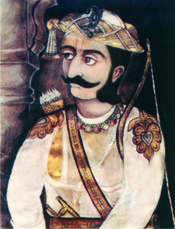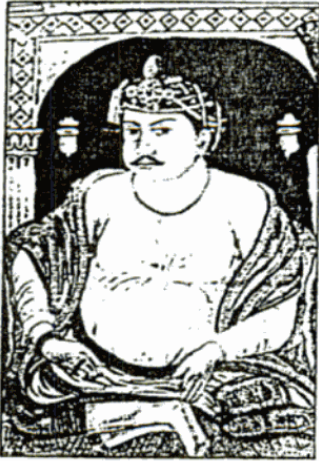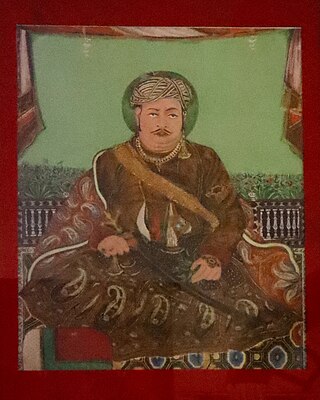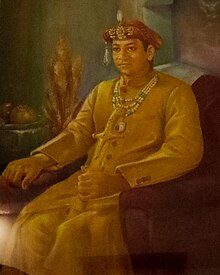
Gondwana, also known as Gondaranya, the land of Gondwana, is a region of India named after the Gondi people. The supercontinent, Gondwanaland, was named after the Gondwana region, because it contained some ancient fossil-bearing rock formations.

The Gondi (Gōṇḍī) or Gond people, who refer to themselves as "Kōītōr", are an ethnolinguistic group in India. Their native language, Gondi, belongs to the Dravidian family. They are spread over the states of Madhya Pradesh, Maharashtra, Chhattisgarh, Uttar Pradesh, Telangana, Andhra Pradesh, Bihar, and Odisha. They are listed as a Scheduled Tribe for the purpose of India's system of reservation.

Chhindwara district is one of the major districts of Madhya Pradesh state of India, and Chhindwara town is the district headquarters. Chhindwara was the largest district in Madhya Pradesh with an area of 10,293 square km before the bifurcation of Pandhurna district. The district is part of Jabalpur division.

Seoni District is a district of Madhya Pradesh state in central India. The town of Seoni is the district's headquarters.

The Kingdom of Nagpur was a kingdom within the Maratha Confederacy in the 18th and 19th centuries. It was ruled by the Maratha Bhonsle dynasty in the mid-18th century. The city of Nagpur was the capital of the state.

Raghuji I was a Maratha general of the Bhonsle clan who established the Nagpur Kingdom in much of east-central India during the reign of Chhatrapati Shahu I. His successors ruled the kingdom until 1853.

Narnala Fort or Narnala Qila Sarkar, also known as Shahnoor Fort, is a hill fortress in the Satpura Range of Vidarbh, Maharashtra, India, named after the Rajput Solanki Chaulukya Ruler, Raja Narnal Singh, also known as Narnal Singh Swami. It was renamed as "Shahnoor" by Islamic rulers but again acquired, rebuilt and got its name "Narnala" by ruler Rao Rana Narnal Singh Solanki, who migrated from Patan in Gujarat.

The history of Nagpur, in central India, spans over 5,000 years, including the Kingdom of Nagpur in the 18th and 19th century. Human existence around present-day Nagpur city can be traced back 3,000 years to the 8th century BC. Menhir burial sites at Drugdhamna indicate megalithic culture existed around Nagpur and is still followed in present times.
The Rajgonds are the ruling class of the Gonds. The region of Gondwana consisted of neighbouring kingdoms. To the south was the Kingdom of Chanda and to the north was the powerful Garha-Mandla kingdom. In the 16th century, the Kingdom of Deogarh rose as a powerful state with the Kherla Kingdom in its western past.
Ajanbahu Jatbasha is considered by historians to be founder of the Gond dynasty of Chhindwara and Nagpur, which ruled the present days territories of Madhya Pradesh, Chhattisgarh and part of Maharashtra in the 16th-18th centuries. Documentation of his origins and rise to power have not survived, but he is the first historical leader of the mountain Gondi people.

Bakht Buland Shah was a ruler of the Rajgond dynasty. He added to his kingdom, the territories of Chanda and Mandla, and portions of Nagpur, Balaghat, Seoni, Bhandara and the adjoining Rajput kingdom of Kherla/Khedla. The present districts of Chhindwara and Betul also fell under his control. A great warrior, he went on to conquer Pauni, Dongartal, Sivni, and Katangi.

Chand Sultan (1706-1739) was a Gond king of Nagpur. He was the eldest son and successor of Bakht Buland Shah of Deogarh. He ascended the throne of Deogarh in 1706 and shifted his capital from Deogarh to Nagpur. He carried out further reforms in his kingdom and planned layout of the new city of Nagpur and under him, the kingdom prospered. He was a kind ruler who loved his people and extended his territory considerably to the east of the river Wainganga.
The Gondwana Kingdoms were the ruling kingdoms in the Gondwana region of India. The Gondwana region includes the core region of the eastern part of the Vidarbha of Maharashtra, Garha Kingdom, the parts of Madhya Pradesh immediately to the north of it, and parts of western Chhattisgarh. The wider region extends beyond these, also including parts of northern Telangana, western Odisha and southern Uttar Pradesh.

The Garha kingdom, also called Garha-Mandla or Garha Katanga, was an early-modern-era kingdom in India. It was the first large kingdom to be founded by the Gond tribe kings and was based in Central India. The kingdom was founded in the 15th century and lasted until conquest by the Maratha Confederacy in 1781.

Islam is the second largest religion in Maharashtra, India, comprising 12,971,152 people which is 11.54% of the population. Muslims are largely concentrated in urban areas of the state, especially in Mumbai and the Marathwada region. There are several groups of Muslims in Maharashtra: Marathi and Konkani Muslims, whose native language is various dialects of Marathi and Konkani, Dakhni Muslims, whose native language is Dakhni Urdu, and more recent Urdu-speaking migrants from North India.

The Bhonsles of Nagpur were a Maratha royal house that ruled the Kingdom of Nagpur from 1739-1853. They hailed from the Bhonsle clan of Marathas and were one of the most important and powerful Maratha chiefs in the Maratha Confederacy.
Raghunath Singh was the Diwan of the Gond king of Deogarh. He tried to unsuccessfully overthrow Raghuji Bhonsla's sway with the help of the Gond king of Chandrapur, Nilkanth Shah.
The siege of Nagpur was laid by Khan-i-Dauran, a high-ranking Mughal official to the fort of Nagpur, ruled by the Gond king of Deogarh, Kok Shah.
The Kingdom of Chanda was one of the main Gond kingdoms, ruling parts of central India. In 1751, it was conquered by the Maratha ruler of Nagpur, Raghoji I Bhonsle.

The Bhonsle dynasty is an Indian Marathi royal house of the Bhonsle clan. The Bhonsles claimed descent from the Rajput Sisodia dynasty, but were likely Kunbi Marathas.
















